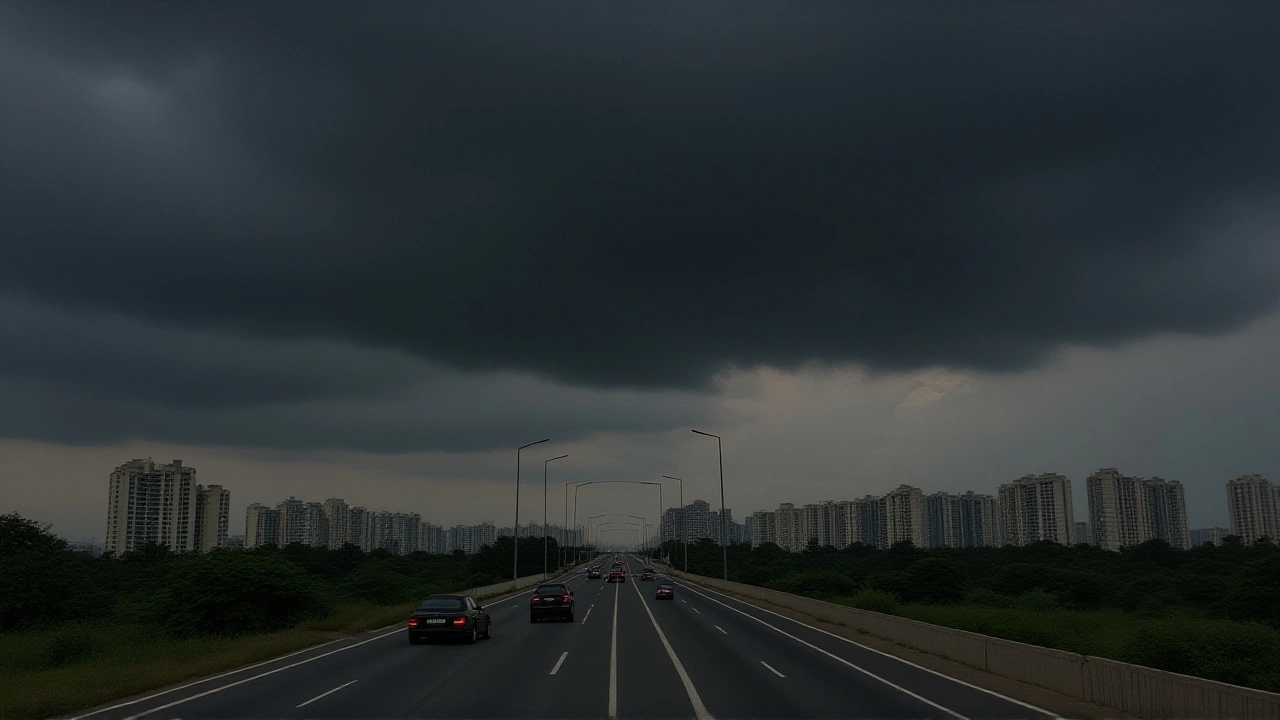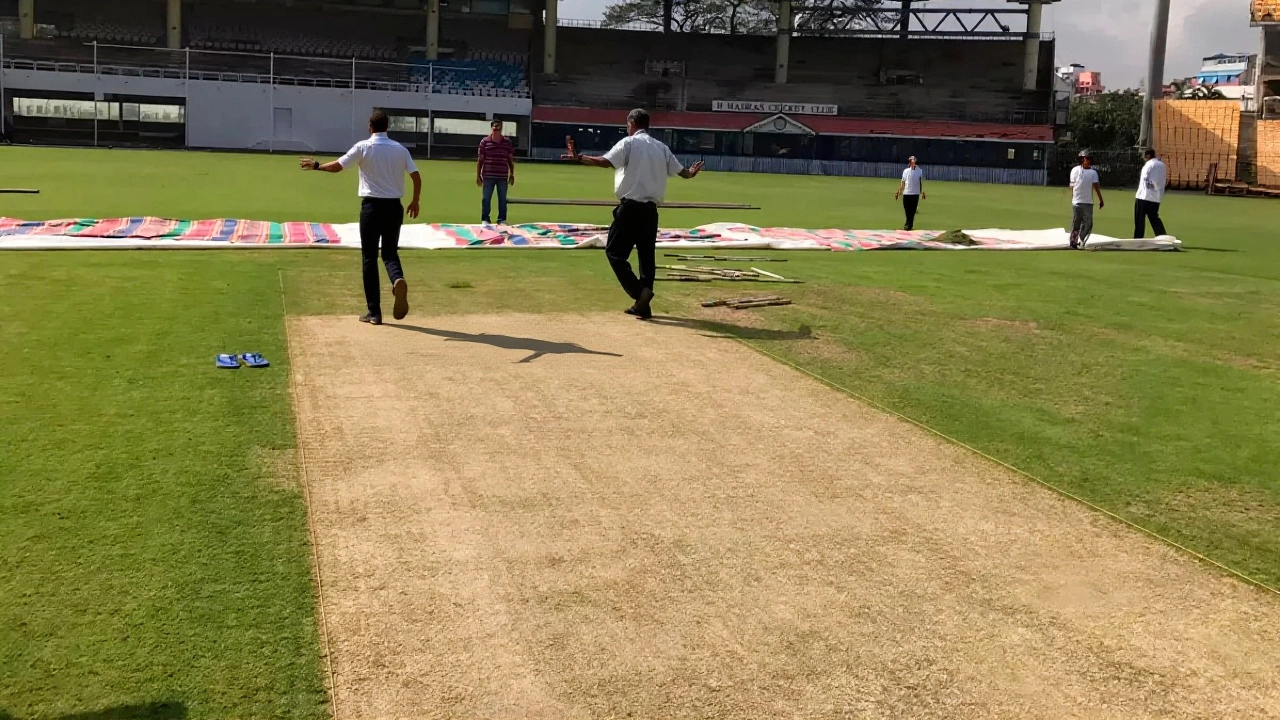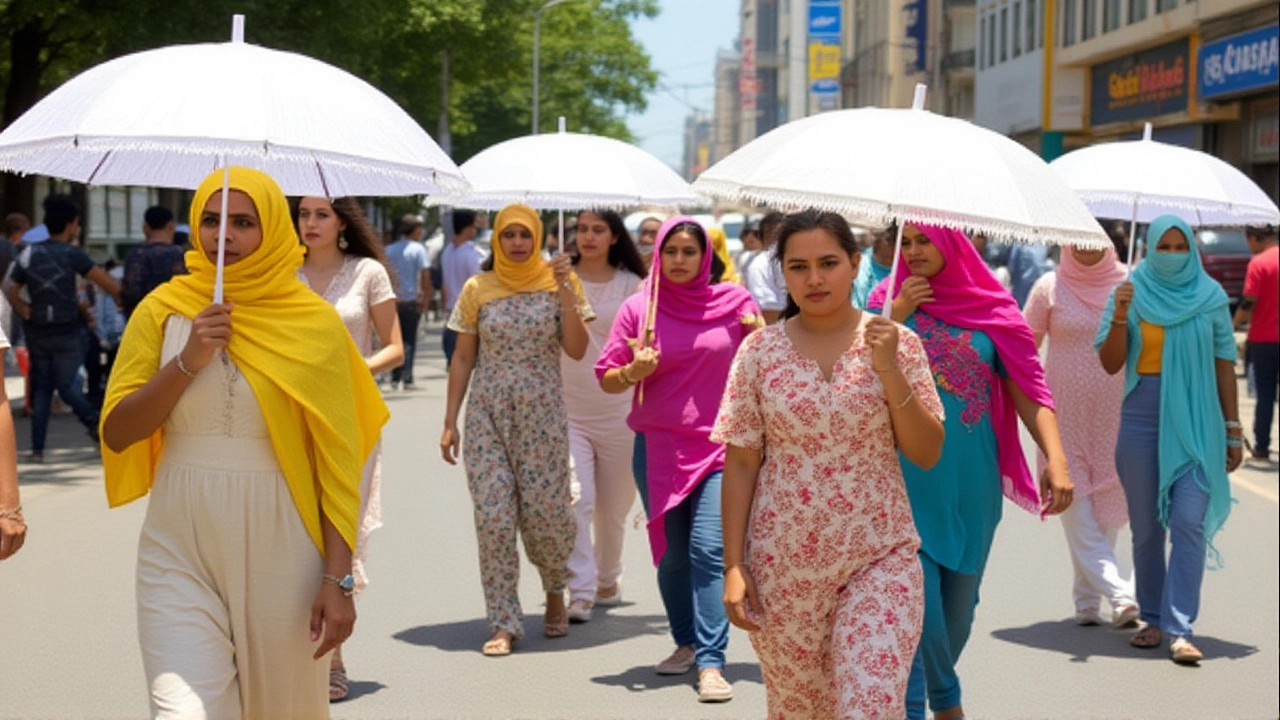When Mritunjay Mohapatra, Director General of India Meteorological Department announced a yellow alert for heavy rain in Mumbai on June 28, 2025, residents braced for potential flooding while the capital, Delhi, continued to wait for the monsoon’s long‑overdue arrival. The alert came with a stark warning: water‑logging could hit low‑lying districts of South Mumbai between 10 a.m. and 6 p.m. IST, and the nation’s weather ministry has already mobilised emergency crews.
Why the monsoon is lagging
The monsoon trough, a band of moist air that usually drifts northward in early June, is sitting unusually far south this year. According to the Monsoon Mission team led by Dr. D. S. Pai at the India Meteorological Department, the system is about five days behind its normal schedule for the Delhi region, which typically sees its first substantive rains around June 15. The delay is linked to a weaker than usual easterly jet stream and cooler sea‑surface temperatures in the Bay of Bengal, where readings on the morning of June 27 hovered at 29.5 °C.
“The monsoon trough is currently positioned north of its normal location, causing delayed onset in Northwest India including Delhi, while enhanced moisture incursion is triggering heavy rainfall in Mumbai and parts of Maharashtra,” Mohapatra told reporters on June 27. The reality on the ground mirrors his words: Delhi faces sky‑grey clouds and humidity climbing past 80 %, yet the rain gauges have stayed stubbornly dry.
City‑by‑city outlook for June 28
Mumbai
The IMD’s Mumbai office flags a 70 % chance of rain, with model consensus from the Global Forecast System and the European Centre for Medium‑Range Weather Forecasts pointing to intense showers between 10 a.m. and 6 p.m. Expected accumulations range from 15 mm to 30 mm. The department warned that areas like Colaba, Nariman Point, and Marine Drive could see water‑logging that reaches ankle‑deep levels.
Delhi
Despite the overcast cover, Delhi’s forecast shows zero measurable rain for June 28. The city will endure persistent clouds, a temperature dip to a high of 33 °C, and humidity hovering near 78 %—a stark contrast to the average 36.7 °C high and 27.8 °C low recorded for this date over the past decade.
Chennai
Chennai stays warm and humid, with highs between 30 °C and 33 °C and relative humidity nudging 70 %. The Regional Meteorological Centre expects light drizzle in the late evening, but nothing that will disrupt daily life.
Kolkata
Scattered showers are on the menu for Kolkata, with a 45 % rainfall probability. Accumulations of 2.5 mm to 7.5 mm are forecast, alongside a high of 30 °C and 65 % humidity.
Hyderabad
Hyderabad’s outlook is cooler—temperatures 25 °C‑27 °C—with isolated thunderstorms in the evening. Wind gusts could peak at 45 km/h, bringing brief but intense downpours.
Shimla
Up in the hills, Shimla enjoys a pleasant 18 °C‑21 °C spread, but steady rain—about 15 mm to 20 mm—will accompany the cooler air.
Bengaluru
Two forecasts conflict for Bengaluru. The IMD’s morning bulletin predicts mild 21 °C‑23 °C conditions, mostly cloudy and dry. Yet the Regional Meteorological Centre warned of a spike to 29 °C by mid‑day, with lows around 19.9 °C. The weekend after June 28 is expected to turn warmer, though exact numbers remain unissued.

Official responses and preparedness
The Ministry of Earth Sciences has triggered its emergency response protocol for Mumbai. In coordination with the Brihanmumbai Municipal Corporation, 200 additional pumping stations are being deployed across the city’s 24 municipal zones. The aim? To keep water levels in flood‑prone corridors under three inches during the peak rain window.
Local authorities have also posted real‑time alerts on social media, urging commuters to avoid low‑lying routes and to keep an eye on traffic updates. In Delhi, the Delhi Pollution Control Committee has advised citizens to stay indoors during peak humidity hours to limit heat‑related health risks.
What the numbers tell us
- Monsoon onset for Delhi is delayed by roughly five days, compared with the climatological norm of June 15.
- Mumbai typically records 15‑22 rainy days in June, with an average of 673 mm of rain. This year’s forecast suggests a single, heavy event could contribute up to 30 mm.
- Rainfall probability on June 28: Mumbai 70 %, Kolkata 45 %, Hyderabad 30 %—the three highest odds across the country.
- Humidity across the six major cities ranges from 65 % (Chennai) to 82 % (Delhi).
- Wind speeds in Hyderabad’s expected thunderstorms could reach 45 km/h, enough to cause localized damage.
These figures underline a pattern of uneven monsoon distribution—some regions soaking up the moisture while others, like the national capital, watch clouds gather with no relief.

Looking ahead: forecasts for the coming weekend
Models suggest the monsoon trough will finally shift northward early next week, bringing the first measurable rain to Delhi on July 2. Meanwhile, Mumbai’s skies should clear by the evening of June 29, with temperatures retreating to a comfortable 28 °C.
For Bengaluru, the weekend promises a warm spell, with highs nudging 31 °C on Saturday. Hyderabad may see another round of isolated thunderstorms, while Shimla’s rain will likely taper off, leaving behind crisp, clear evenings.
Residents across the country are advised to keep monitoring local bulletins, especially as the situation can evolve rapidly once the monsoon finally gains momentum.
Frequently Asked Questions
How will the Mumbai yellow alert affect daily commuters?
Commuters should expect possible road closures in low‑lying districts such as Colaba and Marine Drive. The Brihanmumbai Municipal Corporation is deploying extra pumps, but water‑logging could still cause delays on local trains and buses during the 10 a.m.–6 p.m. window.
Why is Delhi’s monsoon arrival delayed this year?
The IMD attributes the delay to a weaker easterly jet stream and cooler sea‑surface temperatures in the Bay of Bengal, which together keep the monsoon trough farther south than usual. This shift reduces the moisture influx over Northwest India.
What measures have authorities taken to prevent flooding in Mumbai?
The Ministry of Earth Sciences activated its emergency protocol, and the Brihanmumbai Municipal Corporation has placed 200 additional pumping stations across the city’s 24 zones. Real‑time alerts and traffic diversions are also being issued.
When can Delhi expect its first real rain this season?
Current forecasts project measurable rain for Delhi around July 2, once the monsoon trough moves northward. Until then, the capital will face high humidity and cloud cover without significant precipitation.
Will the weekend weather be safe for outdoor activities in the hill stations?
Shimla’s rain is expected to ease by Saturday evening, leaving clear, cool conditions ideal for trekking. However, sudden showers can still pop up, so visitors should carry lightweight rain gear.
